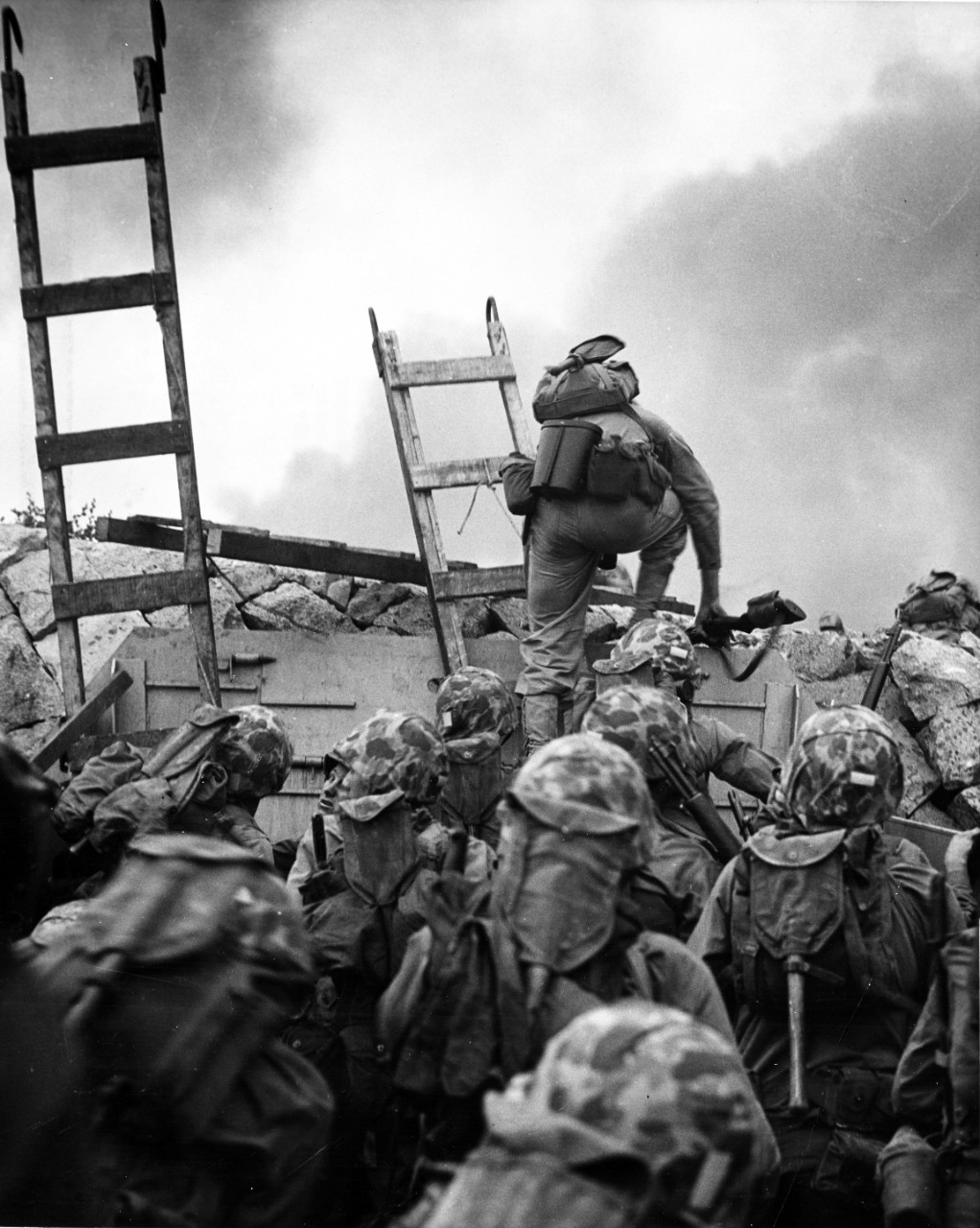15 September 1950
All throughout August and into September 1950, ships of all sizes and nations arrived in Tokyo Bay. Though MacArthur’s nascent operation had been planned in secret, eventually the flotilla became so large that reporters in the area referred to the buildup as “Operation Common Knowledge.” The obviousness of this enormous presence was only somewhat mitigated by U.N. forces’ diversionary tactics; Soviet and Chinese intelligence both warned the North Korean leadership of an imminent landing.
Yet the brazenness of the planned U.N. landing location – a port city about halfway up the western side of the Korean Peninsula called Inchon – confounded predictions. Inchon was a highly dangerous site for an amphibious landing: a rocky harbor with some of the most extreme tides in the world, swinging between high and low approximately thirty feet in total. These risks initially generated strong skepticism of the plan from professionals in the Naval Service. General MacArthur fought hard to convince Navy and Marine leaders of the merits of his bold stroke. Such a fight had to be won for the plan to work; from the beginning, MacArthur intended to rely on the Marines at Inchon for their proficiency in amphibious warfare. By the time the plan was finally approved, MacArthur even went so far as to hand-select the 1st Marine Division to lead the assault. Operation Chromite, one of the most daring amphibious operations in history, was slated to begin on 15 September.
/Korean War_TheBattleOfInchon_Map.jpg?ver=xp47tjJgUmOlE3W5Ot36GA%3d%3d)
Starting on 10 September, U.N. aircraft commenced preparatory attacks on islands near Inchon. Striking at KPA formations on the hillsides, these flights also provided valuable reconnaissance information for the invasion fleet as it steamed up the Korean coast. When advance naval elements arrived on 13 September, carrier-based aircraft squadrons, destroyers, and cruisers initiated a two-day bombardment against KPA in the Inchon area, hitting fortifications, artillery batteries stationed at the coast, and supply points. This barrage caught KPA forces largely unprepared; North Korean leadership had failed to shift sufficient forces to the Inchon area before the U.N. armada arrived, and what few units were in the area were unable to effectively counter the heavy naval guns that now assailed their defenses.
Then, on 15 September, the landings began. The combined Army-Marine invasion forces of X Corps initiated the assault across three beaches termed Red, Blue, and Green, clambering over seawalls with improvised ladders and up hillsides defended by North Korean machine gun teams. Combat was fierce, damaging several large LSTs and even sinking one as they transported invasion waves ashore. By noon, Marines of 3/5 and 1st Tank Battalion at Green Beach had seized Wolmi-do – an island with a commanding position overlooking all of Inchon harbor – allowing subsequent echelons to come ashore. Red Beach and Blue Beach were next, as 1/5, 2/5, and all of 1st Marines joined the fight. Notably, U.S. Marines landing at Red Beach were augmented by a full battalion of ROK Marines, marking the first time the two nations’ Corps conducted amphibious operations together. Here as well, fighting was intense as KPA forces sought in vain to resist the surprise invasion. Yet by evening, X Corps had come ashore in such strength and moved with such speed that North Korean forces had been pushed back from all three objective areas. After repelling hasty counterattacks during the night, U.N. forces were in uncontested control of the Inchon beachhead by the morning of 16 September. Operation Chromite, a daring leap onto the enemy’s back in one of the most dangerous places imaginable, had been a stunning success within twenty-four hours of landing.
/Korean War_TheBattleOfInchon_Fighting.jpg?ver=E-5U4dlb9tNuLcR0L5injw%3d%3d)
New orders were issued to exploit the KPA’s vulnerability and capitalize on X Corps’ commanding advantage. Strikes deep inland began immediately, aiming first at Kimpo airfield between Inchon and Seoul to establish a base for U.N. land-based aviation. The airfield was captured by Marines on 17 September, who then fended off continued KPA attacks throughout that night. Fighting intensified as the main body of U.N. forces neared Seoul and KPA reinforcements arrived, including tanks and aircraft to support Communist counterattacks. Once battle was joined on the urban terrain of Seoul itself, the pace of the U.N. offensive slowed considerably; tooth-and-nail fighting in this built-up area against dug-in forces turned the battle for the ROK capital city into a grinding ordeal. Yet by 28 September, KPA forces had been driven out of Seoul at last. Collapsing Communist lines further south also allowed a final breakout by American and ROK units still inside the Pusan Perimeter. In just two weeks, Operation Chromite had transformed the Korean War from a U.N. near-defeat to a rout of the invading Communists. Today, the Inchon Landing is remembered as a testament to the effectiveness of amphibious operations, as a resounding success born of U.S.-ROK cooperation, and as one of the proudest moments in the history of the United States Marine Corps.
